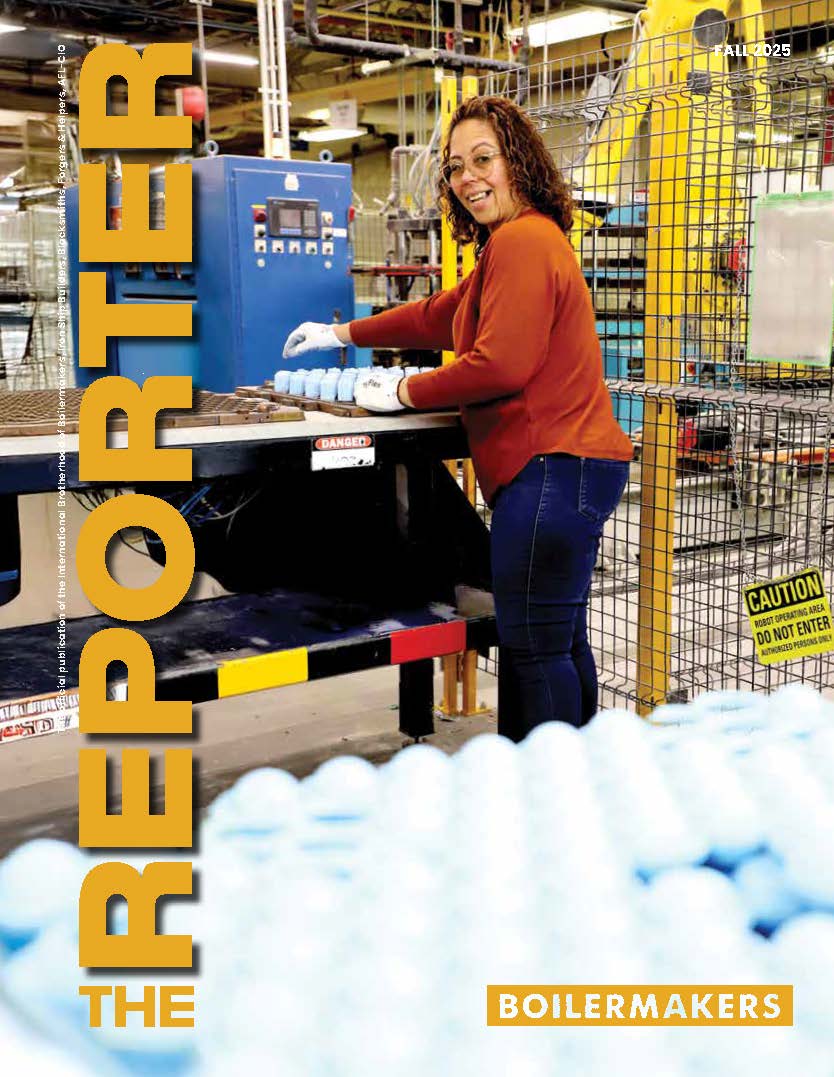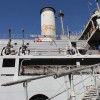Andrew Dolan, L-73, welds test coupons.
View Photo Gallery (6 photos)
This story is a sidebar to “L-146’s Hache wins Canadian apprentice contest"
THE CANADIAN BOILERMAKER apprentice competition tests journeyman tradecraft. The contest begins with a six-hour written exam that includes about 300 multiple-choice questions drawn from the apprentice training curriculum, the Boilermaker Constitution, and local lodge bylaws. Curriculum-related content includes such topics as cutting and welding; hand and power tools; construction materials; metallurgy; blueprint reading; layout and fitting; math; rigging; and boilers, heat exchangers, furnaces, and tanks.
For two to three days following the written exam, contestants compete in practical projects designed to test the application of their knowledge and skills, with a focus on welding and cutting, layout and fitting, tube rolling, and rigging.
This year’s welding and cutting test required the contestants to weld two sets of coupons (small steel plates) — one in the flat position, the other in the horizontal position. Candidates were required to cut a double bevel in each set. The contestants also were required to cut a lifting lug from steel plate.
In the waterwall exercise, the apprentices cut and removed a bad section of tube, prepared the wall stub ends, and prepared and installed a 15-in. replacement pup. (A pup is a short piece of tube that is beveled on both ends to fit into the tube that has been cut.) Contestants were required to allow for specified gaps at the top and bottom of the pup.
The layout and fabrication test challenged contestants to attach a platform on a vessel measuring three feet diameter and eight feet tall. Apprentices were allowed four hours to measure and cut six clips, tack them to the vessel at precise orientations and elevations, rig the platform, hoist it into place, and bolt the platform to knee braces.
The three-hour rigging exercise required contestants to lift a vessel with a simulated weight of 9,250 pounds onto the first level of a rigging platform. Using a mobile crane, apprentices had to rig the vessel and move it horizontally from one end of the structure to the opposite side. The vessel had to be positioned correctly for the vertical lift through an opening in the structure using a second, 60-ton crane. Contestants planned and set up the lift, inspected the condition of all rigging tools and equipment, set up a safe work perimeter, calculated lift loads and sling angles, and used hand signals to communicate with crane operators and two volunteer apprentices who acted as assistants.
In all four practical tests, judges graded for safety performance as well as completion of the project specifications.
This year’s test coordinators were Ken Bachand and Glen Gibson, both from NAIT.
Judges from the technical colleges included Jim Beauchamp, Red River College; Marcel Losier, New Brunswick Community College; Ed Hoffmann, Humber College; and Russ Osborne, BCIT.
Union judges included Mike Bayens, L-146; Al Bennett, Local 359; Darrell Bray, Locals 128 and 555; and Dave Ralph, Local 146.
Employer judges included Greg Blender, Horton CBI; Jerry Desjardins, TIW Steel Plateworks; Gabriel Beaulieu, Ganotec Inc.; and Jason Cherkewick, Alstom Power.











